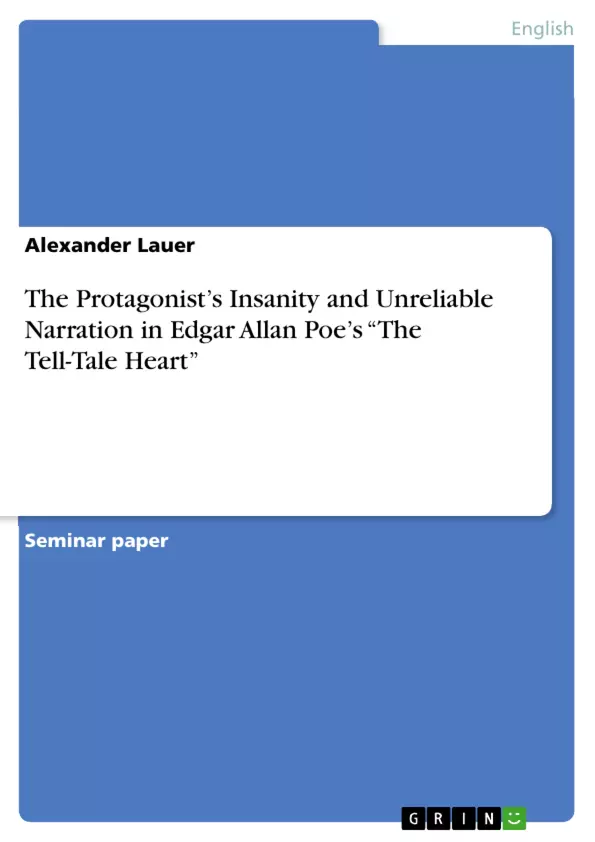Edgar Allan Poe published his short story "The Tell-Tale Heart" in 1843 when there was an ongoing discussion about the insanity defence in the United States. The notion of "moral insanity" or "partial insanity" was proposed, being a type of insanity that twists a person’s moral faculties only, not their intellect. This new legal definition of insanity made it possible to exculpate those who had committed a crime in a rationally planned way but were unable to comprehend its moral depravity. In this paper, the terms "insanity" and "madness" are used with respect to the protagonist of "The Tell-Tale Heart" and are presupposed to refer to the idea of moral or partial insanity.
The quintessence of the arguments put forward is that the reader’s belief in the protagonist’s insanity is created by unreliable and subjective narration. To begin with, the narrative situation of the story is analysed by applying different established categories of narratology and by identifying the narrator as unreliable. Then, the narrator’s unreliability is interpreted with regard to his intention of wanting to appear sane, his subjectivity caused by that intention, and his unconsciously conveyed insanity.
Table of Contents
- Introduction
- Analysis and interpretation of the narrator in “TTH”.
- Analysis of the narrative situation
- General classifications
- The narrator's unreliability
- Interpretation of the narrator's unreliability: intention, subjectivity and insanity
- The narrator's intention
- The narrator's procedure to realise his intention
- The narrator's unreliability as a result of utter subjectivity
- The narrator's insanity as a result of unreliable narration
- Analysis of the narrative situation
- Conclusion
- Works cited
Objectives and Key Themes
This paper aims to analyze the narrative situation in Edgar Allan Poe’s short story "The Tell-Tale Heart" and interpret the narrator's unreliability as a result of his intention to appear sane, his utter subjectivity, and his unconscious insanity. The analysis focuses on the narrator's actions and statements, drawing connections to the concept of "moral insanity" prevalent in the legal context during Poe's time.
- The narrator's unreliability as a key feature of the story
- The narrator's intention to convince the reader of his sanity
- The narrator's subjectivity and its role in shaping the narrative
- The relationship between the narrator's unreliability and his potential insanity
- The impact of the narrative situation on the reader's understanding of the story.
Chapter Summaries
The introduction provides context for the story by exploring the historical debate surrounding the insanity defense in the United States during the 1840s. It defines the concept of "moral insanity" and its implications for the protagonist's actions in "The Tell-Tale Heart."
The analysis of the narrative situation examines the narrator's role as both protagonist and narrator. It categorizes the narrative situation using established narratological terms, highlighting the narrator's unreliability through various examples. The narrator's actions and statements are analyzed for signs of manipulation and exaggeration, emphasizing the discrepancy between his self-portrayal and the reader's perception.
Keywords
The analysis of the narrator's unreliability in "The Tell-Tale Heart" explores the concepts of moral insanity, unreliable narration, subjectivity, and the influence of the narrative situation on reader interpretation.
- Quote paper
- Alexander Lauer (Author), 2014, The Protagonist’s Insanity and Unreliable Narration in Edgar Allan Poe’s “The Tell-Tale Heart”, Munich, GRIN Verlag, https://www.hausarbeiten.de/document/465938


